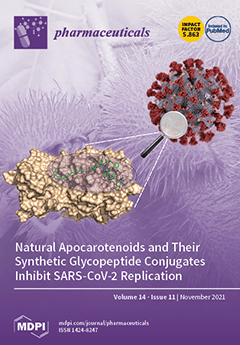Recently, combining histone deacetylase (HDAC) inhibitors with chemotherapeutic drugs or agents, in particular epidermal growth factor receptor (EGFR) inhibitors, is considered to be one of the most encouraging strategy to enhance the efficacy of the antineoplastic agents and decrease or avoid drug resistance. Therefore, in this work, based on introducing 3,4,5-trimethoxy phenyl group as a part of the CAP moiety, in addition to incorporating 4–6 aliphatic carbons linker and using COOH or hydroxamic acid as ZBG, 12 novel EGFR/HDAC hybrid inhibitors
2a–
c,
3a–
c,
4a–
c and
5a–
c were designed, constructed, and evaluated for their anticancer activities against 4 cancer cell lines (HepG2, MCF-7, HCT116 and A549). Among all, hybrids with hydroxamic acid
4a–
c and
5a, exhibited the highest inhibition against all cancer cell lines with IC
50 ranging from 0.536 to 4.892 μM compared to Vorinostat (SAHA) with IC
50 ranging from 2.43 to 3.63 μM and Gefitinib with IC
50 ranging from 1.439 to 3.366 μM. Mechanistically, the most potent hybrids
4a–
c and
5a were further tested for their EGFR and HDACs inhibitory activities. The findings disclosed that hybrid
4b displayed IC
50 = 0.063 µM on the target EGFR enzyme which is slightly less potent than the standard Staurosporine (IC
50 = 0.044 µM). Furthermore, hybrid
4b showed less HDAC inhibitory activity IC
50 against HDAC1 (0.148), 2 (0.168), 4 (5.852), 6 (0.06) and 8 (2.257) than SAHA. In addition, the investigation of apoptotic action of the most potent hybrid
4b showed a significant increase in Bax level up to 3.75-folds, with down-regulation in Bcl2 to 0.42-fold, compared to the control. Furthermore, hybrid
4b displayed an increase in the levels of Caspases 3 and 8 by 5.1 and 3.15 folds, respectively. Additionally, the cell cycle analysis of hybrid
4b revealed that it showed programmed cell death and cell cycle arrest at G1/S phase. Moreover, all these outcomes together with the molecular docking study recommended the rationalized target hybrids
4a–
c and
5a, particularly
4b, may be considered to be promising lead candidates for discovery of novel anticancer agents via dual inhibition of both EGFR/HDAC enzymes.
Full article






